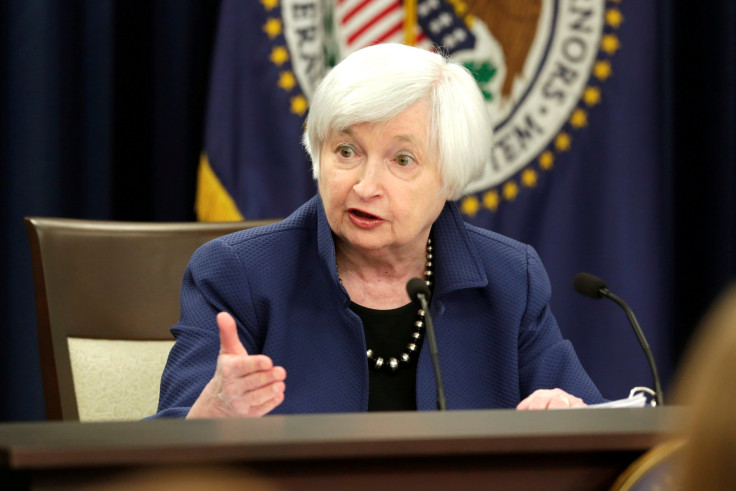Will The Fed Raise Rates? Central Bank To Begin Selling Off Its $4.5 Trillion In Assets

When analysts and observers of the U.S. economy discuss the Federal Reserve’s policy moves, they often point to the federal funds rate—the bank-to-bank lending rate that’s closely followed by interest rates on mortgages, credit card debt and other loans, which the Fed raises to rein the economy in during times of steady growth. But with Wednesday’s release of minutes from the mid-March meeting of the central bank’s policy-making arm, attention shifted to another instrument in the Fed’s toolbox.
In the wake of the Great Recession, the Fed began making massive purchases of government bonds and mortgage-backed securities, raising the demand for, and therefore the price of, those assets, and lowering their interest rates in the process. The Fed’s assets leveled off at about $4.5 trillion around the end of 2014 and the total has lingered there since. In 2007, the figure stood at just below $900 billion.
Read: What Will Happen At The US Federal Reserve's Next Meeting?
As the newly-released minutes indicated, the Fed could very soon begin selling those assets off, triggering a speedier rise in general interest rates, and, as a result of the rise in the cost of borrowing, a potential market panic and fears of economic slowdown.
The summary of the March meeting stated that Fed policymakers “agreed that reductions in the Federal Reserve’s securities holdings should be gradual and predictable, and accomplished primarily by phasing out reinvestments of principal received from those holdings.” One meeting participant, the minutes noted, called for a “rapid” drawdown in the size of the Fed’s assets, starting with mortgage-backed securities—the once fatefully-overpriced, complex assets whose values dropped precipitously during the 2007 housing market crash.
The Fed used both the federal funds rate and securities purchases to drive down interest rates across the board about a decade ago, but needs to boost those rates once more now that the unemployment rate has remained below 5 percent for nearly a year and inflation has hit the Fed’s target level of 2 percent, meaning the economy is humming right along. If an economic disaster were to suddenly strike, however, and the interest rates were already at severely low levels, the central bank would be ill-equipped to respond.
Although the draining of the Fed’s assets could mean a slower hike in the federal funds rate, members of the policymaking body considered movements in that policy rate to be the “primary means” of influencing the economy. Fed Chair Janet Yellen announced March 15 that the central bank would be raising the rate to a range of between 0.75 and 1 percent, the third such increase since the Great Recession.
© Copyright IBTimes 2025. All rights reserved.






















